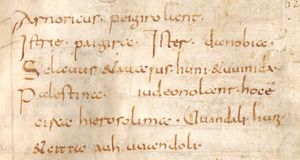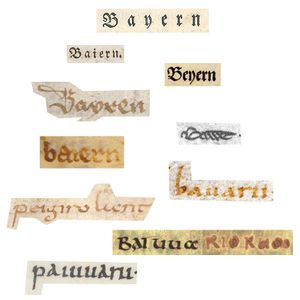
"Bayern" is a name for a country and its inhabitants that goes back to a Germanic-speaking ethnonym (name of a people) which has been in written use since the middle of the 6th century. Over the centuries, many spelling variants have been handed down, some of which are based on errors, but some of which also indicate uncertainties in pronunciation and have provoked folk-etymological interpretations. The spelling with y is the official form of the name since a decree by King Ludwig I in October 1825. The unfortunate, historicising name form "Bajuwaren" for the early medieval population is based on a misinterpretation of the medieval spelling uu (Baiuuari) for w. Etymologically, the name belongs to a composition type for Germanic tribal names that was very common in antiquity. The Germanic root *warjoz/Latin -varii "defender, inhabitant" carries the main meaning, which is more closely defined by the prefix. This might indicate a geographical link with an area formerly associated with the Celtic Boii, with not only the region of Bohemia worth considering. For this reason, the name cannot provide any justification for a derivation of the early "Bayern" from Bohemia.
Early modern name forms
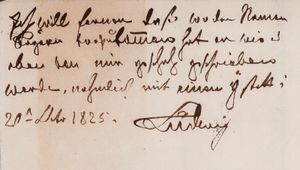
The name Bayern, for the country and its inhabitants, goes back to a Germanic ethnonym handed down since the Migration Period. As is often the case with proper names, the names’ history is accompanied by self- and external interpretations, which are usually based on a misunderstood written form. These processes are also reflected in the current name variants "Bajuwaren" and "Bayern" (with y).
The spelling with y is the official form since a decree by Ludwig I (1786-1868, ruled 1825-1848) from October 1825. Normally, it is explained by the philhellenic spirit of the times, but this is only partially correct. Ludwig's philhellenism may have favoured the legal act, but spellings with -ij- or the spelling variant ÿ, i.e. Baijern, Baÿern, are considerably older and have other causes. Since the early modern period, the spelling ij or ÿ expressed either a long ī or – if it marked the syllable boundary, as in the name Bayern – the sequence of the vowel i and the gliding sound j. This ij or y was the subject of didactic and linguistic disputes, especially in the decades before Ludwig's decree. This is why Johann Christoph Gottsched (1700-1766) distinguished between the "double letter" y for ij as "originally German" and the Greek Ypsilon, and Johann Friedrich Heynatz (1744-1809) emphasised that "Bayern" should be pronounced as Bai-jern precisely because of this y.
Whereas the spelling with y can be justified orthographically, the historicising spelling "Bajuwaren" is based solely on a misinterpretation of medieval traditions of the type Baiuuari, in which uu does not stand for a vowel but for a semi-vowel w ("double u"). A modern rendition of this name variant would therefore be more like Baiwaren. However, baiuuari represents just one of many medieval forms of tradition.
Medieval name tradition
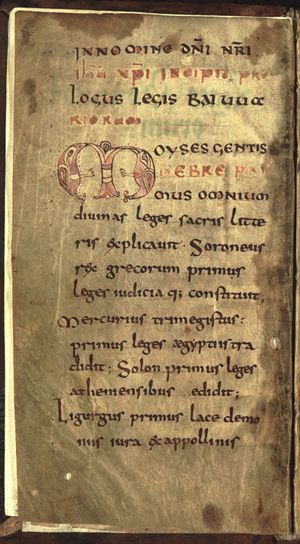
The uncertainties in the written reproduction of the name go back far beyond present and modern times and are also reflected in the wealth of variations in medieval tradition. In addition to non-shifted forms such as Beiara, Upper German-Bavarian sound forms such as Peigira, Peigiri, Peiari or Pagiri often appear, in which the p clearly reveals the Upper German sound ('Upper German consonant shift') and the frequent syllable-separating g expresses a similar glide sound (syllable-separating diphthong sound) as ij in early New High German spellings. In some places, the handwritten tradition even erroneously assigns different regions to the spelling variants. For example, the manuscript that also contains the Wessobrunn prayer, understands peigiro lant to be Arnoricus (Ager noricus), paigira on the other hand to be Istrię (triggered by Ister as a name for the Danube; Bayerische Staatsbibliothek, Clm 22053 [ca. 814], 62r).
Especially in the early Middle Ages, Latinised forms of names are also present, which give a linguistically more conservative impression and reflect a tradition of writing that has become independent of the vernacular. However, these name forms vary greatly as well. For example, the tradition of the chronicle of the so-called Fredegar from the 7th century shows variations such as Badouuarius, Baldouuarius, Bagarius as well as Baioarii, Baiuaria, Baiovaries in a very narrow and contained space. The Lex Baioariorum, which mentions the name Bayern frequently and in a constitutive function, shows a kind of basic type with the dominating traditional forms Baioari, Baio(u)uari and Baiuuari, but also countless secondary forms such as Baiari(i), Bauarii, Bauuari, Baiori, Bacuarii, Pagii. Many variants are based only on ephemeral and clerical errors, others, however, must be evaluated as pronunciation uncertainties and even as folk-etymological reinterpretations. The combination of the diphthong ai with the semivowel u̯ or o̯ of the first syllable apparently caused particular difficulties for Latin writing, which is why it was often simplified. Whilst the sequence ag originally expresses the diphthong aj in popular-language spellings such as Pagiri, the frequent inlaut -g- in the Latin forms, on the other hand, is often based on a Romanised rendition of a vernacular -w- (cf. Medieval Latin guerra vs. Old High German werra for "quarrel"). Regardless of the function of the -g- in the script, the speculative reception of names constructed pseudo-etymological variants with consonantal -g- like Pagii and monophthongic -a- like Bauuarii out of such spellings.
The uncertainty about the correct reproduction and interpretation of the name is expressed in several medieval folk-etymologies, partly mixed with theories of origin. For example, the aforementioned manuscript of the Wessobrunn Prayer interprets the name as Baucueri and translates it with the Latin coronati viri for "Ringmänner" (ring-bearing men, in Old High German baug 'ring' and 'uuerman). According to a striking marginal glossary in the 'Geographus Bavarus' manuscript, "the Bayern are not called Bawaren but Boiaren, after the river Boia" ('Ostfränkische Völkertafel' (east-franconian table of peoples), BSB clm 560, p. 149v-150r from the 9th or 10th century: Beiri non dicuntur Bauarii sed Boiarii a Boia fluvio). The fact that the form Beiri – true to the spoken word – which is mentioned in the introduction to the sentence plays no role in the argumentation is characteristic of this type of medieval etymology and all the more paradoxical because only Beiri refers to the composite Uuizzunbeire for "die weißen Bayern" (the white Bavarians), which is actually listed in the table of peoples.
Jonas von Bobbio (600-659)in his vita of St. Columban, considers the Bayern, in turn, as the successor to the ancient Boier and implicitly justifies this with their name: ad Boias, qui nunc Baioarii [Boiarii] vocantur (2,8). Furthermore, the Bayern are regarded in a glossary to the dialogues by Pope Gregory the Great (around 540-604) as the remnants of the Vandals, "a certain folk from Africa" (St. Gallen csg 299, p 262 = StSG II, 245; 1st half of the 9th century: Vuandali. quidam populi de affrica. quorum reliquę fertur ut sint paiuuarii). This connection, however, lacks any etymological justification.
-
Marginal glossary in the "Geographus Bavarus" glossary on the name "Bayern". Excerpt from: Geographus Bavarus, astronomical and mathematical collective manuscript, Southwest Germany, 9th-11th century, fol. 150r. (Bayerische Staatsbibliothek [Bavarian State Library Clm 560])
-
Equation of "Bayern" with the Vandals in the glossary on the dialogues by Pope Gregory the Great: Excerpt from: Glossaria diversa, St. Gallen 2nd half of the 9th century, p. 262. (Stiftsbibliothek St. Gallen (St. Gallen Foundation Library), Cod. Cod. Sang. 299, licensed by CC BY-NC 4.0)
-
Old High German form of the name Bayern in the collective manuscript from Wessobrunn monastery. Excerpt from: Collective manuscript, Southern Germany around 814, fol. 62r. (bavarikon) (Bayerische Staatsbibliothek, Clm 22053)
The earliest tradition
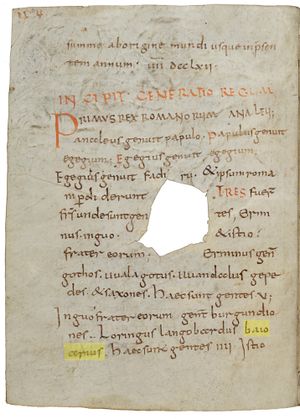
The oldest mention of the name Bayern can be found in the so-called ‘Franconian Table of Peoples’,whose original text, according to Karl Müllenhoffs (1818-1884) now vindicated opinion, was written around 520 in Ostragothic Italy or in Constantinople. However, the manuscripts are mainly from the Carolingian period, which is why the name forms correspond to the other early medieval variant spectrum and are of little significance for the time of origin (Baioarii dominates alongside Baoweri, Baioweri, Bawarii, Boguari). The female name Bavaria might be even older, having been found in a memorial inscription of the necropolis of Saint Salsa in Tipaza (Algeria). However, it is unlikely to be connected to the name Bayern, probably going back to a name for a "bib" (Latin bava for "saliva").
Because of this situation, with a lot of uncertain evidence, the earliest reliable and relevant evidence of the name is found in Jordanes’ History of the Goths (originated around 550, Getica 55, 280), with the main tradition of Baibari or Baiobari. Because of the inlaut -b-, which is marginal in other traditions, barbari was sometimes read and a connection to the name Bayern rejected. However, b is an otherwise widespread late Latin script variant for the Germanic w. Moreover, the context makes it clear that this must be an ethnic name. Jordanes locates the Baibari east of the Suebi (Alamanni). Somewhat later, Venantius Fortunatus specifies these details in a message to Pope Gregory (born 540, Pope 590-404), in which he establishes the land of Baiuaria on the Lech and near the Alamanni and Breoni (Carmina, Praefatio: ... Oenum Breonis, Liccam Baiuaria, Danuvium Alamannia ... transiens. MGH AA 4.1 p.2 line 4). This neighbouring of the Lech, the Wertach and the Breoni is also mentioned in his Vita S. Martini (4, 642-646), where the tribal name is represented by the generic singular Baiouarius (MGH AA 4.1 p. 368). Through the Latin transposition, the morphology of a Germanic composite is revealed, that puts the name in line with the most common Germanic type of ethnic name; namely the composite Germanic -warjōz, Latin -varii.
In this type of composition (so-called determinative composites), the end component represents the main meaning, which is more precisely determined by the prefix. From a linguistic point of view, the name Baio(u)arii therefore denotes a group of the type varii or Germanic *warjōz, which stands out from other varii by its characterisation with Bai(o). The end component originally meant "defender" (New High German wehren < *warjan), but this meaning has weakened occasionally to the name of the inhabitants, where it lives on in the New High German suffix -er.
Word formation and etymology
This type of name is represented in antiquity by the names Amsivarii, Angrivarii, Chasuarii, Chattuarii and Raetobarii, whose large number, together with other isolated names (Vidivarii, Teutonoaroi, Falchovarii and possibly Anglevarii), testify to the strong productivity of the type. The tendency to reinterpret other names like Bructeri or Riparienses into Boructuarii or Ripuarii is ultimately explained by this productivity, which had regional focal points over time. In the early Roman Empire, one centre was located in the wider Ems area; during the Migration Period, Rhaetia and Noricum seem to have formed another focal point. In the early Middle Ages, on the other hand, there are many new formations with a lot of variations in England (with the suffix -wære, -waras, -wearan etc.). This distribution suggests that the name type became particularly productive in border and colonisation areas, which were marked by strong social shifts and population movements. The semantics of defensiveness, which are expressed in the suffix, should also be understood in this context.
In the majority of cases, the determinant prefixes consist of geographical names or topographical appellatives, in some cases also of names of peoples. Which of the two groups the name Bayern belongs to has not been conclusively resolved. However, an intentional reference to the name Boier is possible, even if medieval etymologies like that of Jonas of Bobbio should not be used to support this. The name Boier has become productive in the formation of geographical names, which could be directly considered as starting points for the prefixes, but could also be proof of a memory of the name Boier that outlived them.
Bavaria and Bohemia
The oldest name of this kind, attested since around the start of the Common Era (Strabon 7,1,3; Velleius Paterculus 2,109), is Boiohaemum (> New High German Böhmen), a composite which has the name of the Boier in the prefix and the Germanic *haima- "home, place" in the suffix. The name Boiodurum (Celtic duron "gate, market place, place"; Ptolemy's Geography 2,12,7), which has been attested by Ptolemy (2nd century A.D.), is formed similarly. Together with other evidence (such as the inscribed name Boios in Manching), it becomes clear that a kind of Boier motif was effective in the naming of Bayern and its wider surroundings. Other related names probably include the ethnicities Baimoi or Baianoi (Βαῖμοι/Βαίανοι; Ptolemy's Geography 2,11,26) and Bainochaimai or Baginochaimai (Βα[γ]ινοχαῖμαι; Ptolemy's Geogr. 2,11,20) as well as the geographical names Baias (handwritten variant Boyas; Geographer of Ravenna 4,18) and Bainaib (Origo gentis Langobardorum 2). All may be indirectly related to the name Boier and show the Germanic a for the Celtic o.
Since these are names from different sources and very different times and the premises involved cannot be verified, the exact connections remain unclear. The two ethnic names where handed down first, but their varying traditions allow for alternative interpretations. Baimoi could be derived from Baianoi on the one hand, but could also be shortened from *Baihaimoi and therefore be related to the name Bohemia; similarly, Ba(g)inohaimai could be derived from *Baiohaimai. In both cases, the plural form of the country’s name is to be understood as the name of its inhabitants. Since the -n- in Bainochaimai is transscribed consistently, one tends to look for the aforementioned demonym Baianoi in the prefix. It is likely that this demonym did exist, as is shown by other evidence, in particular the place name Bainaib, which the Origo gentis Langobardorum lists as a station for the migration of the Lombards alongside Burgundaib and Anthaib (for the ethnonyms Burgundii and Antes). The group name of the Bāningas (< Germanic *Bainingōz), in the Old English Widsith, has also been cited in support of this theory. The late testified simplex of Baia could be claimed as the core of the entire group of names, if this is not itself derived crudely from the word Baiahaima. With the existing lack of certainty in mind, it should not be forgotten that the "Boier motif" was not only used by the early Germanic tribes in Bavaria, but also by other Germanic peoples, as early personal names of the type Boiorix and Boiocalus prove. In this situation, the link between the name Bayern and that of the Boier cannot in any way be used as a justification for a geographical or even ethnic derivation of Bayern from Bohemia.
References
- Walter Goffart, The Supposedly ‘Frankish’ Table of Nations. An Edition and Study, in: Frühmittelalterliche Studien 17 (2010), 98–130.
- Johann Christoph Gottsched, Kern der deutschen Sprachkunst, aus der ausführlichen Sprachkunst, Leipzig 1753.
- Johann Friedrich Heynatz, Deutsche Sprachlehre zum Gebrauch der Schulen, Berlin 1790.
- Kraus, Andreas, "Ludwig I.", in: Neue Deutsche Biographie 15 (1987), S. 367-374 [Online-Version].
- Serge Lancel, Modalités de l’inhumation privilégiée dans la nécropole de Sainte-Salsa à Tipasa (Algérie), in: Comptes rendus des séances de l’Académie des Inscriptions et Belles-Lettres 141 (1997), 791–814.
- Heinz Löwe, Die Herkunft der Bajuwaren, in: Zeitschrift für Bayerische Landesgeschichte 15 (1949), 5–67.
- Ernst Erich Metzner, Textgestützte Nachträge zu Namen und Abkunft der ‘Böhmer’ und ‘Mährer’ und der zweierlei ‘Baiern’ des frühen Mittelalters. Die sprachliche, politische und religiöse Grenzerfahrung und Brückenfunktion alteuropäischer Gesellschaften nördlich und südlich der Donau, in: Ingeborg Fiala Fürst / Jaromír Czmero (Hg.), Amici Amico III. Festschrift für Ludvík E. Václavek, Olomouc 2011, 321–350.
- Rudolf Much, Baiern, Βαῖμοι, Βαινοχαῖμαι, in: Johannes Hoops, Reallexikon der germanischen Altertumskunde, Band I. Straßburg 1913, 156–157.
- Ludwig Rübekeil, Diachrone Studien zur Kontaktzone zwischen Kelten und Germanen, Wien 2002.
- Ludwig Rübekeil, Bajuwaren, §1 Der Name, in: Germanische Altertumskunde online, 2019.
- Joseph Schnetz, "Baias" und der Baiernname. Zwei historisch-philologische Streitfragen, in: Zeitschrift für bayerische Landesgeschichte 16 (1950), 1-19.
- Norbert Wagner, Zu den geographischen Glossen der Wessobrunner Handschrift Clm 22053, in: Rolf Bergmann (Hg.), Althochdeutsch, Bd. 1. Grammatik, Glossen und Texte, Heidelberg 1987, 508–531.
Sources
- Fredegar, Chronik, ed. Bruno Krusch (MGH SS rer. Merov. 2), Hannover 1888.
- Geograph von Ravenna, ed. Joseph Schnetz = Itineraria Romana, Bd. 2, Ravennatis anonymi cosmographia et Guidonis geographica, Leipzig 1929, Nachdruck Stuttgart 1990.
- Jonas von Bobbio, ed. Bruno Krusch (MGH SS. rer. Germ. 37), Hannover 1905.
- Jordanes, Romana et Getica, ed. Theodor Mommsen (MGH Auct. ant. 5.1), Berlin 1882.
- Origo gentis Langobardorum, ed. Georg Waitz (MGH SS rer. Lang. 1), Hannover 1878.
- Ptolemaios, Geographie, ed. A. Stückelberger & G. Grasshoff: Klaudios Ptolemaios. Handbuch der Geographie. 1. Einleitung und Buch 1-4, Basel 2006.
- Strabon, ed. Stefan Radt: Strabons Geographika, Bd. 2, Göttingen 2003.
- Velleius Paterculus, ed. W. S. Watt: Vellei Paterculi Historiarum ad M. Vinicium consulem libri duo, Leipzig 1988.
- Venantius Fortunatus, ed. Friedrich Leo (MGH SS Auct. ant. 4.1), Berlin 1881.
Further Research
Hier alternative Titel für die Suchfunktion eintragen!
Cite
Ludwig Rübekeil, Bayern (Name), published 02 October 2019, English version published 21 February 2024; in: Historisches Lexikon Bayerns, URL: <https://www.historisches-lexikon-bayerns.de/Lexikon/EN:Bayern_(Name)> (20.12.2025)

![Marginal glossary in the "Geographus Bavarus" glossary on the name "Bayern". Excerpt from: Geographus Bavarus, astronomical and mathematical collective manuscript, Southwest Germany, 9th-11th century, fol. 150r. (Bayerische Staatsbibliothek [Bavarian State Library Clm 560])](/images/thumb/6/63/Ostfraenkische_Voelkertafel_Bayernname.jpg/300px-Ostfraenkische_Voelkertafel_Bayernname.jpg)
